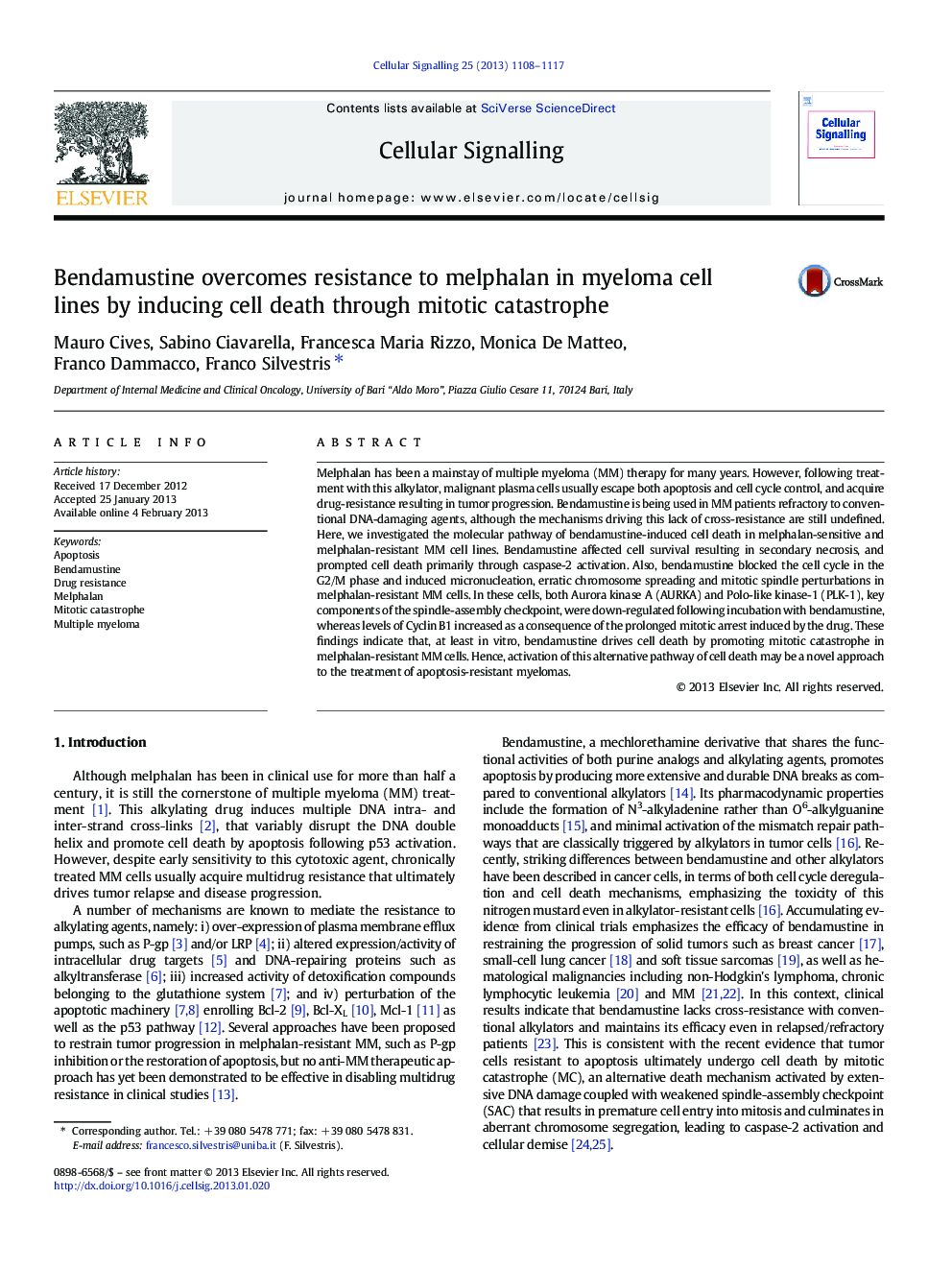| Article ID | Journal | Published Year | Pages | File Type |
|---|---|---|---|---|
| 1963485 | Cellular Signalling | 2013 | 10 Pages |
Melphalan has been a mainstay of multiple myeloma (MM) therapy for many years. However, following treatment with this alkylator, malignant plasma cells usually escape both apoptosis and cell cycle control, and acquire drug-resistance resulting in tumor progression. Bendamustine is being used in MM patients refractory to conventional DNA-damaging agents, although the mechanisms driving this lack of cross-resistance are still undefined. Here, we investigated the molecular pathway of bendamustine-induced cell death in melphalan-sensitive and melphalan-resistant MM cell lines. Bendamustine affected cell survival resulting in secondary necrosis, and prompted cell death primarily through caspase-2 activation. Also, bendamustine blocked the cell cycle in the G2/M phase and induced micronucleation, erratic chromosome spreading and mitotic spindle perturbations in melphalan-resistant MM cells. In these cells, both Aurora kinase A (AURKA) and Polo-like kinase-1 (PLK-1), key components of the spindle-assembly checkpoint, were down-regulated following incubation with bendamustine, whereas levels of Cyclin B1 increased as a consequence of the prolonged mitotic arrest induced by the drug. These findings indicate that, at least in vitro, bendamustine drives cell death by promoting mitotic catastrophe in melphalan-resistant MM cells. Hence, activation of this alternative pathway of cell death may be a novel approach to the treatment of apoptosis-resistant myelomas.
► Bendamustine induces mitotic catastrophe (MC) in multiple myeloma cell lines. ► Activation of MC is useful for treating apoptosis-deficient myeloma cells. ► Initiation of MC offers a valuable strategy in the treatment of relapsing myelomas.
